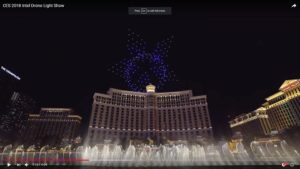Category Archives: All
All of the posts on this site.
What to Watch 17 Columbus and Ohio Bike Paths
There aren’t many good videos on Ohio bike paths. I guess I’m going to have to make one.
Beaches, bikes and bridges: Ohio State engages expert teams to re-imagine Olentangy River Corridor, December 2017
Click here for some good Ohio bike path maps.
What to Watch 16: Joseph Haydn’s 22nd Symphony, 18 Minutes
Joseph Haydn 22nd Symphony, written in 1764, performed in 2014 by Orchestra UniMi in Vicenza, Italy, played right now on-demand with the internet since 1991
Click here for Orchestra UniMi’s website.
Click here for What to Watch 4, Mozart’s 40th Symphony.
Post-Industrial Time Clock
Time to Re-Implement our Old Time
I propose that we re-implement an old time format that makes much more sense. Many might consider it a “new” time format, but that’s because nobody today is old enough to remember how we did time before. You would have to be ~150 years old. Computers and smart phones finally enable us to wake up from the madness. The time format goes like this:
-What time is it?
-“It is plus 47 minutes right now.” (which it actually was when and where I wrote this, because the sun rose 47 minutes ago here in Columbus, Ohio).
-What time is sunset?
-“Sunset today is at plus 14:16.” which it actually will be in Columbus, Ohio today, 11 May, because the day is 14 hours and 16 minutes long
or, equally:
-“Sunset is at 9:43 until.” because the sun sets tonight 9 hours and 43 minutes before it rises tomorrow, 12 May. The night is 9 hours and 43 minutes long.
9:43 + 14:16 = 23:59. The sunrises might be slightly off exactly 24 hours, but always by less than a minute (or so).
-What time is midday today?
-“Midday today is around plus 7 hours I think. Oh wait, let me think, I guess it’s at plus 7:08 today we just said what time sunset is duh.”
-What time do you get up?
-“I wake up at 30 until everyday.”
-What time do you go to bed?
-“I go to bed anywhere from 6:30-’til to 8:30-’til. I like to get 6-8 hours of sleep.”
-What time does work start?
-“My boss is weird. He starts work late in the summer and super-early in the winter when it’s dark and cold. It constantly shifts day-to-day. Also, one day in the spring and again in the fall, it suddenly jolts all at once by a whole hour. So disorienting, but I’ve been hearing rumors that we are going to stop doing this soon.”
This clearly begs the question, do seconds, minutes and hours make sense? Or should we be using a fraction of the sun’s path in the sky? Yes, minutes and hours still make sense, and they have been around much longer than this system of time we have now. The 24 hour day is literally older than Jesus. Hipparchus standardized the length of an hour and called it “equinoctial time.” Hours and minutes are arbitrary units, but a sun-fraction unit would mean that the unit itself changes day-to-day. We probably don’t want that.
Then what do we call the old time system that we used for ~134 years, it looks like, since about 1884? I propose that we call it “IMC Time” after the International Meridian Conference that proposed it in 1884. Or, we could just call it “Industrial Time,” because it was implemented and used in the early years of the Industrial Revolution.
Of course, we can continue to refer to the 12-hour time format with AM and PM as “Ambiguous Time,” or “Confusing and Stupid Time.”
What to Watch 15: Fusion and the Cold War
The Tsar Bomba, Largest Man-Made Explosion Ever, October 1961, Discovery Channel
- Hiroshima, Japan, WW2: 16,000 tons of TNT equivalent
- Nagasaki, Japan, WW2: 22,000 tons of TNT equivalent
- Tsar Bomba device: 50,000,000 tons of TNT equivalent: more than 2,000 times the explosive energy of each of the bombs that leveled 2 entire cities in Japan in 1945.
Cuban Missile Crisis 1 by Extra Credits History
Cuban Missile Crisis 2 by Extra Credits History
Cuban Missile Crisis 3 by Extra Credits History
Hiroshima Peace Memorial Museum Website, English
Click here for WTW 14 Fusion as an Energy Source.
Click here to search “fusion” on this site.
What to Watch 14: Fusion Energy, 16 Minutes
1. Fusion Explained in a Nutshell by Kurzgesagt
2. JET, Joint European Torus, largest magnetic confinement fusion reactor.
- JET is the current record holder for controlled fusion energy production by most measures. The record was set in 1997. See video.
- Located in Oxfordshire, UK.
- Annual budget 2014-2018 = 145.6 million euros ~ $175 million per year. Source.
- Video is from 2014.
3. National Ignition Facility, was the largest effort at inertial based fusion.
- The fusion ignition effort ended in April 2014, but is still one HUGE laser. Do not point this laser at your eye.
- Located in California, USA.
- NIF total cost was ~$3.5 billion. Source.
- Video is from 2009.
4. More References
-
ITER will be a larger version of JET
- Being built in southern France near Marseilles.
- One cost estimate is 13 billion euro ~$15.6 billion. Source.
- https://www.iter.org/proj/inafewlines
-
LPPFusion is a large current private attempt at fusion
- Located in Middlesex, NJ, USA
- Annual budget appears to be ~$685,000 per year, and they have an interesting funding model: Source.
- https://lppfusion.com/about/
- Cool fusion videos: https://www.youtube.com/user/LPPfusion
Click here for the historical context of fusion, fusion in the Cold War.
What to Watch 13: Cryptocurrency 2, the Blockchain in Society and Pop Culture, 22 Minutes
The Blockchain in Society, We’ve Stopped Trusting Institutions and Started Trusting Strangers, Rachel Botsman on TED, June 2016
Blockchain in Pop Culture, Lovesong for Satoshi Nakamoto Whitepaper by “Bitcoin Girl” Naomi Brockwell, November 2015
Of Note
-
You can also search “Kasotsuka Shojo” which translates to “Virtual Currency Girls” for the Japanese pop group.
- Click here to search “cryptocurrency” on this site and see all crypto-related content.
My Personal Conclusion on Cryptocurrency (For Now)
The idea behind Bitcoin is that you do not have to trust banking institutions. The transactions are verified by the technology / other users. I researched signing up for Bitcoin, and decided not to. The problem I found was in order to access the blockchain and “own” Bitcoin, you need a computer program to do it. The computer program is written by a coder and I am not going to take the time to understand the code. Therefore, instead of trusting an institution, I am trusting the coder who is the middleman who wrote the code. I actually trust both the banks and the coders (with a little research), but I do not have a reason to switch. The only advantage I see is that there is no tax trail, but I am not paying taxes on these transactions anyway. I don’t need a brand new currency in my life. Sticking with PayPal, Venmo, TransferWise, and dollars, for now!
www.unconventi.onl
What to Watch 12: More Drones, History and Future of Drones, 29 Minutes
The videos in this post (click here) best explain the entropy concept.
For more posts related to entropy, select the entropy tag.
Entropy
As you see this technology progress, it is natural to think, “Oh, we are so smart now, we know how to make tiny drones fly.” Alternatively, consider our (humanity’s) success within the concept of entropy. The law of entropy (Second Law of Thermodynamics) states that all systems tend toward disorder, and that energy is required for complexity to develop. Applying this broadly, improved drone flight is complexity. In order for drones to improve, energy must be applied in the form of human thought, manufacture, etcetera. Also, at the drone level, the drone must have energy on board both to fly and to power the tiny computers to control itself. Controlled flight is complex! Put this way, it is not that we are so smart to make these drones, or that the drones are so smart to control themselves. We have the excess energy to dedicate to engineers and academics to think about this complex stuff, and the drones have great modern batteries to deliver energy to efficient tiny computers to fly in totally cool complex ways!
1970s: The CIA’s Insectothopter, The CIA’s Own Channel on YouTube
Notice that battery life (lack of energy) was a major limiting factor.
2014: In What to Watch 2, I Recommended this Drone TED Talk
Notice that some of the flight control computing was being done on computers in the room, not on board the drones themselves. Energy is a factor here as much as or more than the size and weight of the processors. Computing all of the complex control on-board the drones would consume more power. The battery would be larger and heavier, and/or drain faster. Energy!
~2016?: Drone Swarm Dropped from F-18s
There is not a whole lot to see in the video, but it looks real to me.
2018: 8 January, Bellagio Hotel, Las Vegas by Intel, posted by LV Sun
This was the best drone show video I could find. How appropriate that it’s in Vegas. US’s gambling capital => $$$ => energy => spectacularly complex drone show!
The lights in Vegas have always impressed me. Walk through any normal US city with a normal number of lights, and at any given time, you can find some lights that are burned out within sight. Now try that walking around Vegas with 100s of times as many lights as a normal city and you will go hours without finding a single burned out light. The energy being expended in Vegas is spectacular. (Do they have an ordinance or something? If so, expensive to maintain.)
20__, Future (…?): Dramatization of the Potential of Weapon Drones
This video is a dramatization, but it’s not that we don’t know how, we’re smart enough, … we just need a better battery.



























